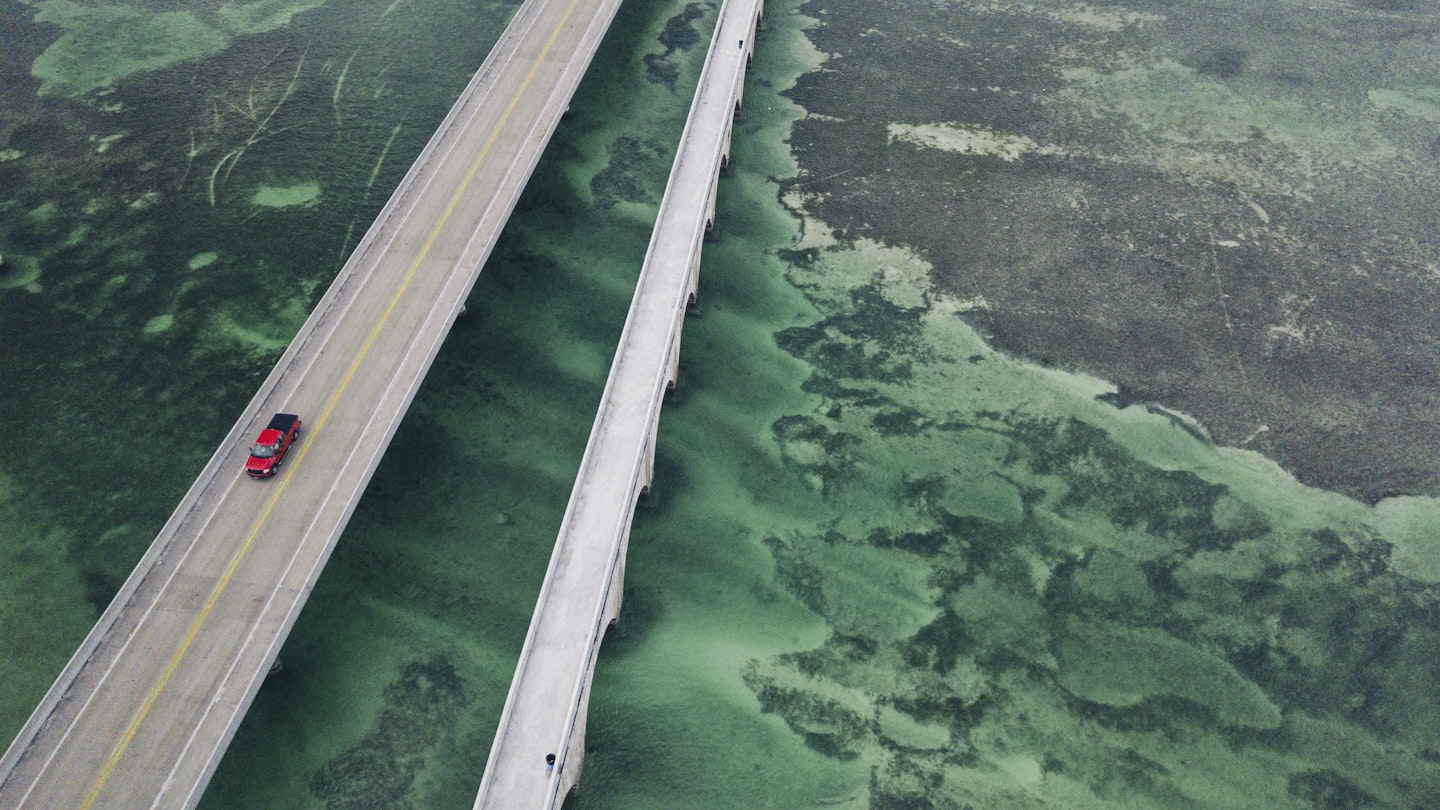The Keys are to Florida what Florida is to the United States: an unexpected appendage, a hybrid space where North America and the Caribbean meet, an escape for those that don’t necessarily fit anywhere else, a dongle of improbable geography.
The equally improbable Overseas Hwy (US 1) runs through these 113 miles of mangrove islands and fishing villages, its mile markers setting a countdown from the Florida mainland to the idiosyncratic pot of gold at the end of the rainbow: madcap, colorful Key West.
This handy guide helps you map out the best places to explore along the journey. Remember, there’s never a need to rush on island time.
Editor’s note: Please check the latest travel restrictions before planning any trip and always follow government advice.
Key Largo
But first, as they say, coffee. After leaving the mainland at Homestead, 30 miles south of Miami, keep on trucking until you reach the tropical mansion that is the Key Largo Conch House, a perfect spot for breakfast.
As the name implies, the Conch House is in Key Largo, the first main island in the Keys archipelago. So close to the mainland and so wide, relative to her sister islands, she almost feels like a chunk of the mainland herself.
A big draw here is John Pennekamp Coral Reef State Park, which hosts the most visitor-accessible coral reef habitat in the continental US. Activities include glass-bottom boat tours, a mangrove trail, stand-up paddleboarding, kayaking and of course, scuba diving and snorkeling.
Many birds use the Keys as a stopover on their yearly migrations, and the islands themselves seem to attract those who are committed to wildlife rehabilitation. These two qualities come together at the Laura Quinn Wild Bird Sanctuary. A small boardwalk leads visitors past healing avian fauna, including some permanent residents who cannot be reintroduced to the wild.

Islamorada
Islamorada is the next major island (actually, island cluster) you’ll hit as you drive south. You can explore the unique geology of the Keys at Windley Key Fossil Reef Geological State Site, a former quarry that reveals the layers of coral forming the solid ground of these exposed reef islands.
Their geology is fascinating, but due to a lack of topography and relatively thick forest cover in the islands’ interior, you can sometimes miss a sense of being on an island. Not so in Islamorada, where the teal waters of Florida Bay and the Gulf squeeze in on the Overseas Hwy. Although there aren’t many traditional beaches in the Keys, locals love Anne’s Beach, which mixes mudflats with a bit of sand and lovely warm waters for swimming and back paddling.
Some of Islamorada’s coolest attractions are just offshore – spots like Indian Key and Lignumvitae Key; tiny islands, once inhabited, now abandoned, that are best accessed by kayak, which can be rented at Robbie’s Marina.

Marathon
Marathon marks the “middle” of the Keys, synchronizing the islands’ ultimately rural character with their unmistakable reliance on tourism and fishing.
Sombrero Beach is popular with Keys residents and is one of the few traditional white-sand beaches in the archipelago. Sea turtle lovers and wildlife enthusiasts may want to visit the Turtle Hospital, which provides crucial rehabilitation for sea turtles affected by various hazards.
Although walking space in the Keys is limited, you can get pleasantly lost at the Crane Point Museum, which covers 63 acres and includes about 1.75 miles of trails that cut through fine examples of native Keys habitats.
Marathon’s biggest attraction is accessed as you leave the island and proceed south along the 7-Mile Bridge, an engineering marvel. On sunny days, you may witness fish leaping from the water, racing alongside you on your road trip.

Big Pine & Lower Keys
Big Pine is the quintessential residential Key, primarily populated by locals who keep the islands running smoothly. As implied by its name, Big Pine is largely blanketed in forest, which is also home to the tiny Key Deer. This species is protected within the National Key Deer Refuge, which encompasses much of Big Pine and the adjacent No Name Key. (Yes, that’s the name of the island. It’s worth stopping by for a pizza.)
Almost adjacent to Big Pine is Bahia Honda State Park, widely recognized as the nicest beach in the Keys. Aside from stunning sand, it features nature trails, a science center, and the surreal old Bahia Honda Rail Bridge – a literal bridge to nowhere that sits above the water.

Key West
As if to underline themes of escape and eccentricity, Key West feels almost separate from the other Keys. Those islands are largely rural – small towns afloat on the Gulf of Mexico and Florida Bay. While Key West isn’t a big city (it was once Florida’s largest), it is significantly livelier than any other island in the chain. A longtime magnet for the gay community, artists, authors, and anyone else enamored by its Caribbean architecture and leafy streets, Key West has a New Orleans vibe, albeit with a dose of coconut rum.
The Florida Keys boast one of the world’s most unique ecosystems. Visitors can explore this captivating natural world at the Eco-Discovery Center, which is one of the top family-friendly attractions in the islands (though it’s equally enjoyable for adults!). For a peaceful retreat, it’s hard to beat a simple stroll through the Key West Butterfly and Nature Conservancy, which provides a serene atmosphere. Those seeking a spookier atmosphere should wander among the gothic headstones and crumbling vaults of the island’s fantastical main cemetery.
Finally, wrap up your exploration with a visit to Mallory Square, Key West’s main plaza, bustling with street performers and vendors as the night unfolds into an epic evening of dining and entertainment in the idyllic Old Town.
This article was first published Jan 11, 2019 and updated Oct 18, 2021.





